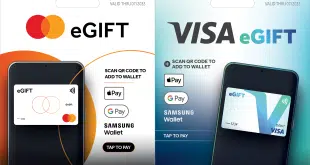Visa Inc. is bracing itself to lose some PIN-debit transaction volume in the newly regulated U.S. debit market, but the industry leader says it is ready to meet any challenges from competitors.
“I still believe that we’re in a better position to compete in this environment than anyone else,” executive chairman and chief executive Joseph W. Saunders said Wednesday afternoon during a brief conference call with analysts. Visa scheduled the call to discuss its financial outlook in the wake of the Federal Reserve's release last week of its long-awaited rules to implement the Dodd-Frank Act’s Durbin Amendment, which calls for debit interchange regulation and bans exclusive network affiliations on debit cards. The law also bans issuers and networks from interfering with merchants’ routing preferences.
Visa’s big debit business is at risk from the exclusivity and routing provisions because many debit cards offer only the Visa brand for signature debit and the Visa-owned Interlink point-of-sale mark for PIN-debit. Under the Fed’s new rules, most debit cards must offer at least two unaffiliated networks by next April. Visa has about 75% of the U.S. signature debit market and by some estimates Interlink has about half of the PIN-debit market. U.S. debit is a $1.6 billion business for Visa since, according to Saunders, it accounts for about 20% of Visa’s global net revenues that in fiscal 2010 amounted to $8.1 billion. Visa gets transaction fees and other income from issuers and merchant acquirers.
According to Saunders, Visa assumes “a portion of transactions may be routed away from Interlink to alternative PIN networks. But make no mistake: We will compete vigorously to maintain the Visa routing preference and have several strategies we will put into action to achieve this outcome.”
Just what those strategies are, however, only Visa knows. Several analysts asked, only to be told by Saunders or chief financial officer Byron H. Pollitt Jr. that Visa would have more to say later. But financial incentives to merchants are clearly one weapon Visa will use. Both Visa and MasterCard give incentives to financial institutions to issue cards with their brands, and to merchants to accept them. Saunders said Visa is veering toward the high end of its recent guidance that volume and support incentives would take 16% to 16.5% of gross revenues. “Providing some level of incentives to specific merchants may be an effective strategy to ensure Visa receives routing preference,” he said.
One analyst referred to speculation that PIN-debit volume could suffer in the post-Durbin environment because the Fed’s interchange regulations don’t distinguish between PIN and signature debit. But Saunders said that’s not clear, noting that some debit cards currently don’t have a PIN option. He also pooh-poohed the notion that banks would soon start pushing their customers to use credit cards, which command higher interchange rates than debit cards. “It’s easy to talk about doing that, but the last time I checked we were still in a recession and in order to move transactions from debit cards to credit cards you have to be willing to give the credit to people. I think that will happen over time, but I don’t think it’s anything immediate.”
Durbin’s interchange regulations apply only to debit card issuers with $10 billion or more in assets. Visa earlier said it would commit to a two-tier interchange schedule once the Fed released its final rates, with one reflecting the regulated rates (21 cents plus 0.05% of the sale) and the other at or close to current rates for smaller issuers. Visa’s spring interchange release had no changes from 2010’s rates. The topic didn’t come up during Wednesday’s half-hour call.
Visa expects it would bear the brunt of any financial hit from the Durbin Amendment in fiscal 2012, which starts Oct. 1, 2011, with growth resuming in fiscal 2013. Saunders said Visa would have more to say about the debit situation when it releases its fiscal 2011 third- and fourth-quarter earnings.
nn





